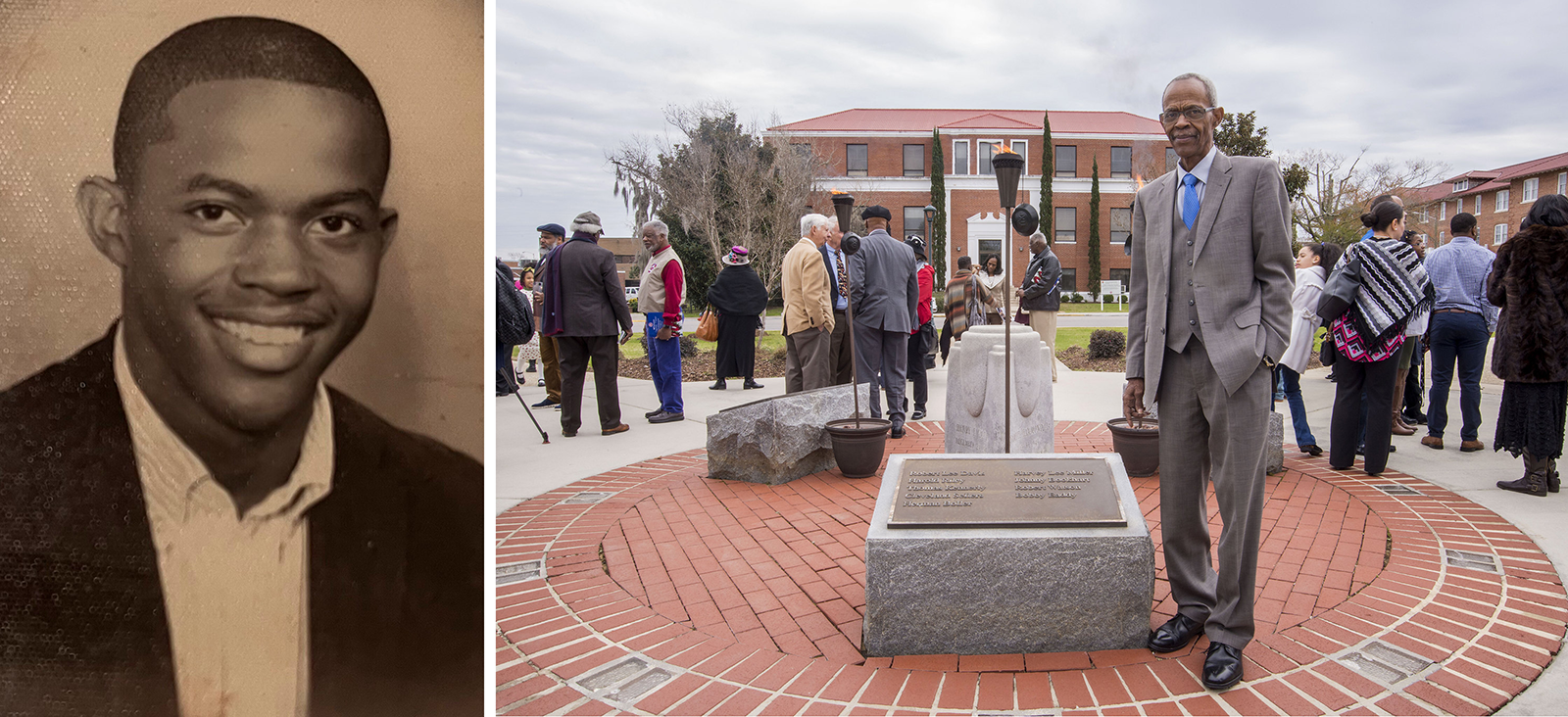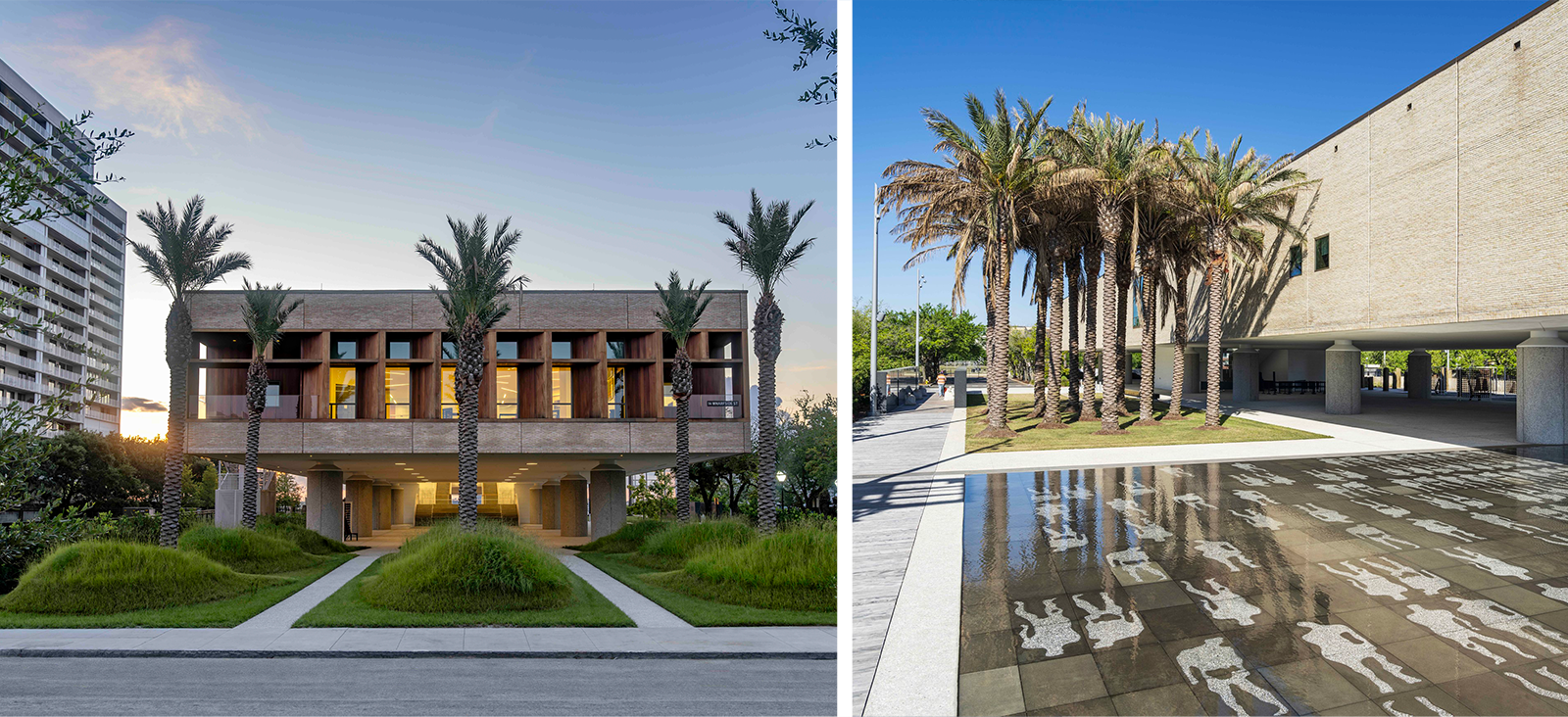Bobby Eaddy and IAAM Contribute to Resilient Legacy of the February 8, 1968, Orangeburg Massacre
The Orangeburg Project
February 8, 2025
Washington, D.C. — One of the survivors of the 1968 Orangeburg Massacre, Bobby Eaddy was just 17 years old when he was wounded by State Highway patrolmen firing at a group of students on the campus of South Carolina State College. The bullet shot into the back of his upper torso on the night of February 8, 1968, stopped near his heart and could not safely be removed by doctors. He survived, yet carried the bullet there in his chest for the rest of his life.
In conjunction with the 57th commemoration of the Orangeburg Massacre, the International African American Museum (IAAM) unveiled a photograph of Bobby at 17 years old and recognized the unconscionable reality of him living with the nearly fatal bullet for approximately 55 years.
The unimaginable Civil Rights artifact, posthumously removed after his peaceful passing at 72, has been archived by the IAAM in effort to further preserve history and honor South Carolina State University’s courageous and resilience students. Bobby’s story is now included in the museum’s South Carolina Connections gallery along with other information about the Orangeburg Massacre.
“IAAM is deeply honored to share the poignant story of community activist and Orangeburg Massacre survivor Bobby Eaddy,” said Martina Morale, IAAM’s Director of Curatorial and Special Exhibitions. “By telling his story, we aim to honor his legacy and the legacy of all the victims of the Massacre.”
The museum’s location at Gadsden’s Wharf memorializes where 40 percent of African slaves were forcibly brought into the United States throughout the 400 year-long transatlantic slave trade.
Photos: The International African American Museum in Charleston, S.C., recognized Bobby Eaddy in the S.C. Connections gallery. He was a 17 year-old college freshmen at S.C. State College when shot by law enforcement during the February 8, 1968, Orangeburg Massacre. Bobby Eaddy is also shown standing by the Orangeburg Massacre marker bearing his name on the campus of now S.C. State University.
Bobby was the first of 14 students to testify during a 1969 trial of the state troopers involved in the tragedy; however, a jury acquitted the officers in less than two hours. Eaddy went on to have a full life as a community leader, including enlisting for eight years of decorated service in the United States Army during the Vietnam War, ministering as a church deacon, and advocating for justice with his University community.
In 2001, SC Governor Jim Hodges expressed deep regret for the events of February 8, 1968. In 2003, SC Governor Mark Sanford issued an apology. The Orangeburg Massacre is among the cases included under the US Federal Civil Rights Cold Case Records Collection Act of 2018, which is intended to continue addressing such unresolved matters.
Bobby was fully dedicated to raising awareness about the Massacre. After his passing in 2022, SC State University posthumously awarded his bachelor’s degree and presented him with the SC State Social Justice Award. The recognition is named after Henry Smith, Delano Middleton, and Samuel Hammond, who each lost their lives that night fighting for the liberties we enjoy today.
“Bobby Eaddy experienced a trauma that few people could understand, yet he turned that experience into a force for enlightenment,” South Carolina State President Alexander Conyers said in 2022. “We at SC State are forever in his debt for the courage and resolve he offered to generations, as well as for his dedication to his alma mater. He will be tremendously missed.”
Although the shooting happened years before the similar Kent State University and Jackson State University tragedies, and was the first of its kind on any United States college campus, the unresolved incident remains largely unknown in American Civil Rights history.
“There is a profound responsibility to honor the historic sacrifices made during the Orangeburg Massacre. On February 8, we remember Samuel Hammond, Henry Smith, and Delano Middleton, who tragically lost their lives, as well as the approximately 30 students who were wounded by gunfire alongside Bobby Eaddy. Today, he is remembered as a loving husband and father, devoted to both family and faith. We also recognize the emotional trauma endured by the South Carolina State University community, are grateful to the International African American Museum, and appreciate all who advocate for civility and justice worldwide” – Statement by The Eaddy Family.
For more visit:
International African American Museum (IAAM):
- IAAM Recognizes Bobby Eaddy in South Carolina Connections Gallery, 2025
- IAAM Recognizes Bobby Eaddy in South Carolina Connections Gallery, 2025, Instagram
- IAAM Mourns Loss of Bobby Eaddy, 2022, Instagram
- IAAM Website
Additional Resources


